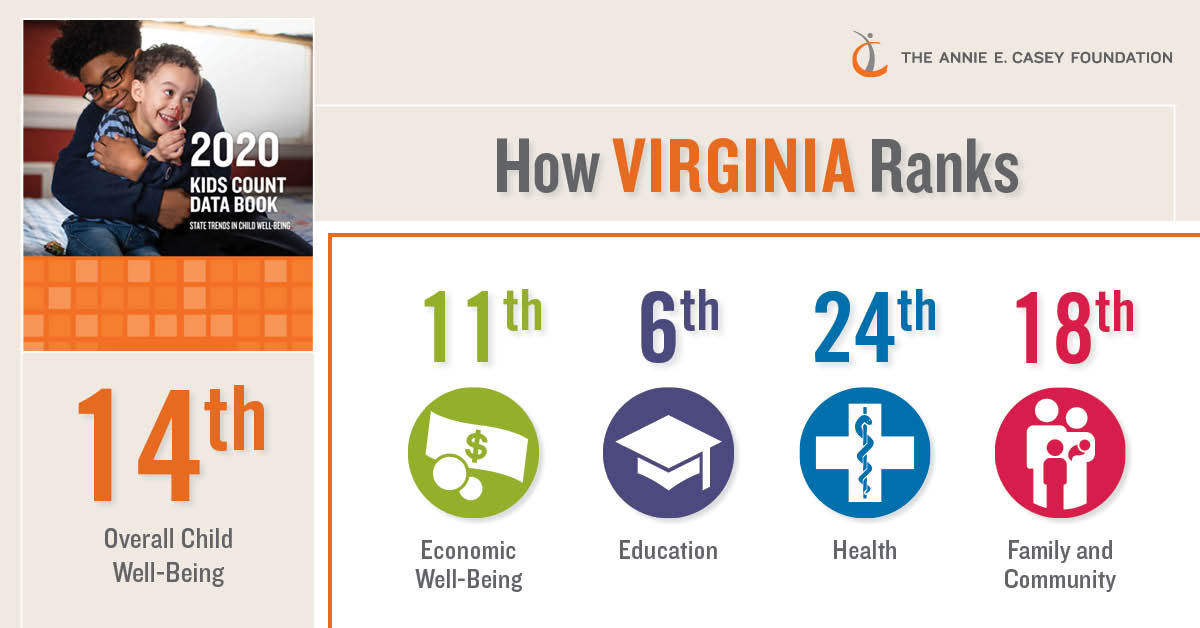

The 2020 KIDS COUNT Data Book was released by the Annie E. Casey Foundation, an annually published resource that tracks child well-being nationally and state by state and ranks the states accordingly. The report is based on the latest available data for 16 key indicators and also identifies multi-year trends-comparing statistics from 2010 to 2018. Policymakers, researchers, and advocates can continue to use this information to help shape their work and build a stronger future for children, families, and communities.
For the 2020 report, those data are 2018, so they do not reflect current conditions amidst the COVID-19 crisis. The Casey Foundation plans to explore the effects of the pandemic on child well-being in a future report but is releasing the annual Data Book as usual to ensure legislators and other policymakers, researchers and advocates for children have the information they are customarily able to access at this time of year.
Overall Virginia ranked 14th in the Nation. The 2020 Data Book shows improvement in Virginia on eight indicators in the KIDS COUNT Index, including:
Six indicators stayed the same:
In two areas, indicators worsened:
Virginia Ranked 11th in Economic Well-Being and improved in 3 out of the 4 indicators since 2010.
Highlights include:
Virginia Ranked 6th in Education and improved in 2 out of the 4 indicators and remained the same in the other 2 indicators.
Highlights include:
Virginia Ranked 18th in Family and Community and improved in 2 out of the 4 indicators and remained the same in the other 2 indicators.
Highlights include:
Virginia Ranked 24th in Health. For this domain Virginia stayed the same for one, improved in one, and worsened for 2 of the 4 indicators. This domain includes new data on childhood obesity that has not been included in previous years. Due to this change, rankings in this domain should not be compared to previous reports.
The Virginia KIDS COUNT data center includes these indicators and hundreds more at the state and even local level over time. For example, interested in learning more about the percent of Children in poverty across Virginia? The Virginia KIDS COUNT data center has data available by locality and race.
Read More Blog Posts